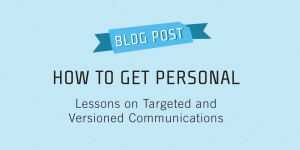These days, there’s no denying the power of video when it comes to marketing and communications. The lure of moving visual content is hard to ignore, probably because our brains process nonverbal messaging 60,000 times faster than text-based communications. If you stop to think about what comprises our digital world, it’s clear that visual storytelling is a huge part of the landscape. There are major implications that can be derived from this information, particularly for nonprofits and other organizations that fundraise.
Aside from raising money, nonprofits are responsible for marketing just like any other business. Instead of boasting about products or solutions, these organizations are charged with raising awareness for their cause and the unique programs and services they offer that make a difference in their chosen area. Regardless of our business designation, we are working together in a very crowded market place. The nature of online communications is so fast paced that by the time you get a seat at the table, the previous party has already finished their proverbial meal. The sweet spot here for nonprofits, though, is that video and other visual content can help connect new and existing audiences to their missions in a fresh and exciting way that resonates on a much deeper, emotional level.
Now let’s think about that statistic again: our brains process visuals 60,000 times faster than text. But there’s another component to that figure: 93% of our communications are nonverbal. Given the immediacy of social media and abundance of email, there’s an obvious need for quick and easy to digest messages that leave us feeling charged to take action—regardless of if that action is buying a new car or making a charitable contribution.
So what does all of this mean? Simply put, nonprofits (or any other businesses, for that matter) have no reason not to be incorporating video into their overall communications.
Here are practical applications for you to think about:
Putting a Face on the Work
Nonprofits spend a lot of time writing appeals and solicitations trying to communicate to their stakeholders about why their work is important and the impact it has on their community of focus. Oftentimes this language can become muddied by over-explanation and difficult-to-grasp measurements that the reader becomes lost or, worse yet, disengaged. Putting this same message into video allows recipients to feel your passion, understand your work, and hear directly from beneficiaries. The emotional impact a video can make in this area is leaps and bounds beyond text alone.
Tearing Down the Walls
Everyone loves going behind the scenes, which is something video allows your audiences to do especially if they’re unable to physically experience what your institution has to offer. From this perspective, video is great for arts organizations. Going beyond the obvious visual nature of the work, many arts organizations and institutions have a mission-driven obligation (and to be quite honest, a civic duty) to expose specific audiences to specific works of art.
For physically handicapped or economically disadvantaged audiences, the ability to experience world class museum exhibitions is a treasured opportunity. Many museums around the world are making full or partial exhibits available for free online, as well as cataloguing many unique works on their websites for public view. Virtual tours are the wave of the future so for those unable to experience a live theatre production or show, this provides a new outlet for art to transform and contributes to the immediacy and sense of “being there.” From a development perspective, this is a great angle to solicit donations from since it is often central to an institution’s mission.
Stewardship and Follow Up
What better way to be thanked by an organization you’ve supported than a personal video message? Video is great for donor stewardship and follow up event communications. In this format, you’re able to document the results of your work; thank your donors; reference that amazing evening benefiting your organization and so much more. Video generates buzz and excitement while being easy to share, thereby raising awareness of who you are and what you do.
The Wrap Up
Videos and other forms of visual communications have surpassed meme-stage fads, becoming one of the most powerful and influential marketing tools any business can employ. Like any other form of marketing, however, there are important things to keep in mind. When it comes to your organization, be the moon and not the sun. The central focus of your video should be your passion, mission, or constituents. Also, don’t sink time into trying to create viral content. Create something of meaning and of value, both to you and those you’re trying to reach. Finally, always be sure to have some call to action that creates a pathway for continued engagement. Last words? Videos should always compliment your goals, they shouldn’t be them.
You Might Also Enjoy:
+ A Beginning Video Strategy for the Efficient Marketer
+ Keep Communications Afloat: The Battle Against Donor Attrition
+ 4 Practical Ways Non-Profits Can Use Social Media
Like what you see? Stay in touch!











